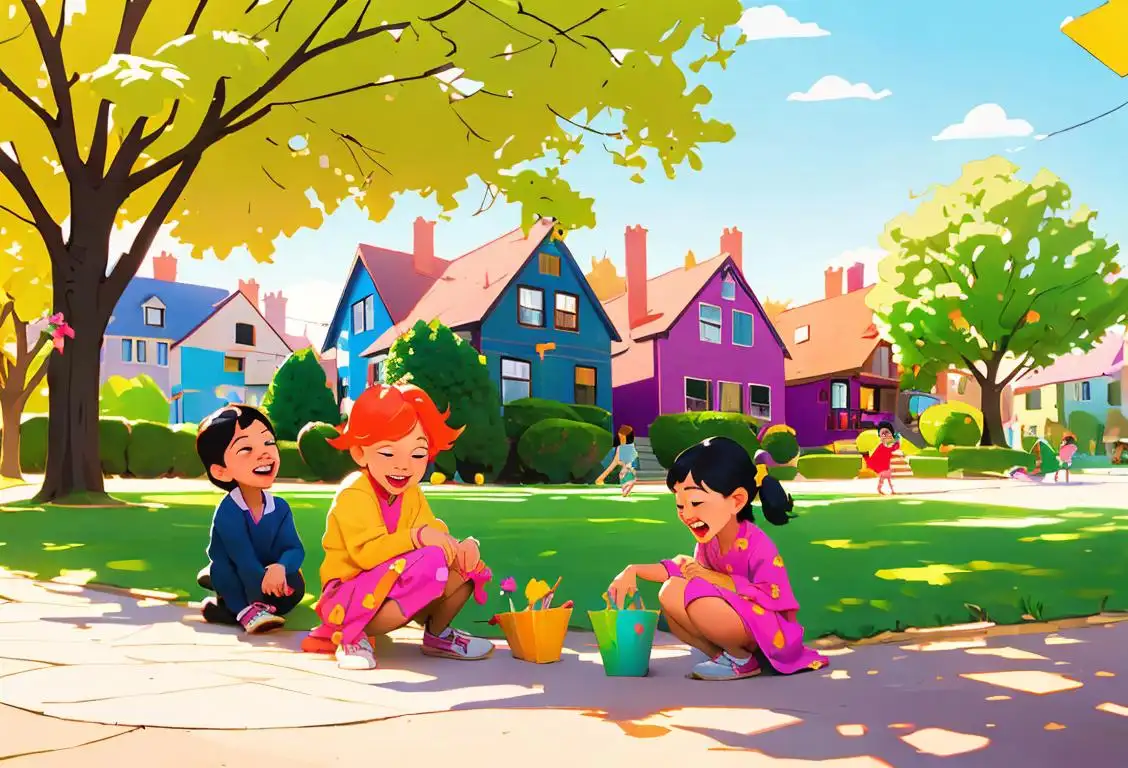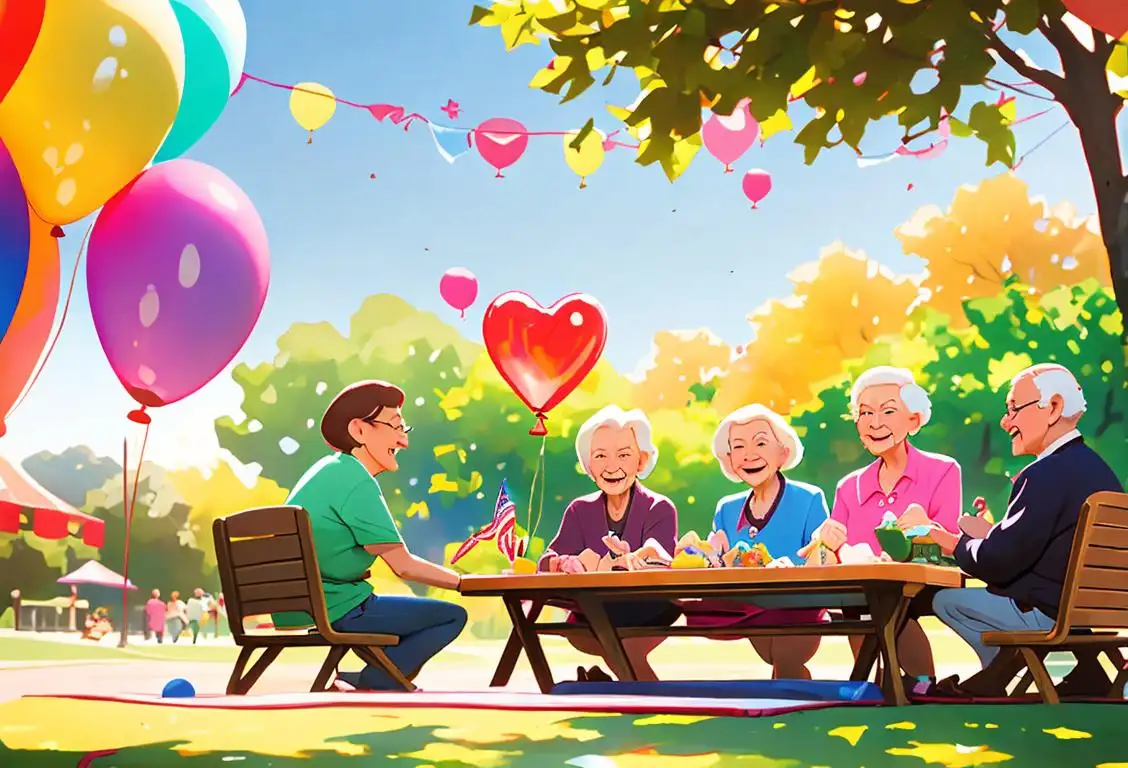National Pal Day

Hey there, my pal! Get ready to celebrate National Pal Day with your favorite buddy! Whether it's your partner in crime, your partner in grime, or your partner in rhyme, this special day is all about the friends who make life a little more awesome.
When is Pal Day?
It's national pal day on the 3rd April.
The Origins of National Pal Day
Ah, National Pal Day, a day dedicated to celebrating the bond between pals. But where did this day of camaraderie come from? Well, my curious friend, the internet tells me that the origins of National Pal Day are a bit mysterious. No one knows exactly who started it or why, but hey, let's not dwell on the details. Instead, let's focus on the magic of friendship!
Friends have been an essential part of human existence since, well, forever. From cavemen painting on cave walls to modern-day besties sharing cat memes, pals have always been there to lend a helping hand, offer support, or just be a listening ear.
So, here we are, celebrating National Pal Day — a day to honor and appreciate those who bring joy and laughter into our lives.
Ways to Celebrate National Pal Day
Looking for ways to make this day extra special for your pal? I've got you covered! Here are some ideas to get the party started:
- Host a pal-themed movie marathon complete with popcorn, cozy blankets, and endless laughs.
- Plan a surprise outing to your pal's favorite spot. It could be a park, a cafe, or even a mini-golf course. The key is to create unforgettable memories together.
- Write a heartfelt letter or send a silly e-card to your pal, expressing how much they mean to you. It's always nice to let them know how much you appreciate them.
- Organize a virtual hangout if you and your pal can't be together physically. Thanks to the internet, distance is no longer a barrier to having a good time.
- Go on an adventure together! Explore new places, try new activities, and make memories that will last a lifetime.
Different Kinds of Pals
Pals come in all shapes and sizes, and they play different roles in our lives. From childhood chums to work buddies, let's take a closer look at some of the pals we might encounter:
- The Childhood Pal: Remember that friend you played endless games of tag with? The one who knew all your secrets and shared all your adventures? Childhood pals are like treasures from the past, reminding us of where we've been and how far we've come.
- The Work Pal: This is the pal who makes Mondays more bearable, turns a rough day into a laugh fest, and joins you for countless coffee breaks. Work pals are the unsung heroes of the office, bringing a little sunshine to the daily grind.
- The Adventure Pal: This pal is always up for trying new things and stepping out of their comfort zone. From bungee jumping to trying exotic foods, they push you to embrace the thrilling side of life.
- The Loyal Pal: The loyal pal sticks with you through thick and thin, offering unwavering support and a shoulder to lean on. They're the ones who stick around even when times get tough, reminding you that you're never alone.
So, National Pal Day is all about celebrating these incredible bonds and expressing gratitude for the pals who enhance our lives. Gather your friends, create memories, and show your pals how much they mean to you. Happy National Pal Day, my friend!
History behind the term 'Pal'
1672
Origin in Romani
The term 'pal' has its origins in the Romani language, where it was originally spelled as 'phal'. The Romani people are an ethnic group with roots in India, and their language, Romani, includes words borrowed from various languages over the centuries. In Romani, 'phal' means 'brother' and is used to address or refer to male friends or acquaintances.
1643
The Origin of Pall and Palfrey
The term 'pal' traces its roots back to the early 17th century in England. It originally derived from the word 'pall', which referred to a cloak or mantle. 'Palfrey' was another term used to describe a type of horse. During this time, 'pal' was used as a colloquial term to refer to a friend or companion. The connection between 'pal' and 'palfrey' likely stemmed from the idea that friends were like loyal steeds, accompanying each other on journeys through life.
1737
Usage in London underworld
In the 18th century, the term 'pal' made its way into the English language, particularly in the criminal underworld of London. It became a slang term used to refer to an accomplice or partner in crime. This usage reflected the close bond and trust between individuals engaged in illicit activities.
1780
The Influence of Criminal Slang
In the late 18th century, 'pal' gained popularity as a term used among criminals in Britain. It became a common part of criminal slang and was used to describe an accomplice or partner in crime. This association with the underworld gave 'pal' a somewhat negative connotation, but it also contributed to the term's widespread usage in everyday language.
1812
Pal as a widespread term
By the early 19th century, the term 'pal' had gained popularity beyond the criminal underworld and was used more widely in English-speaking societies. It evolved to become a colloquial term for a friend or a person with whom one had a close, friendly relationship. The term 'pal' was associated with camaraderie and loyalty among peers.
19th Century
Palantines and Buddy Pals
In the 19th century, a group of German immigrants known as Palatines migrated to the United States. They settled primarily in New York and influenced the local dialect. The German word for 'boy' or 'lad', 'pälzisch,' eventually morphed into 'pal.' The term 'pal' became widely used to refer to a close friend or comrade. Additionally, during this century, 'pal' also gained popularity in American slang, specifically in the form of 'buddy-pal.'
1930s
Pal in American Pop Culture
In the 1930s, the term 'pal' saw a surge in usage through American pop culture. Popular films and entertainment at the time often depicted endearing friendships and camaraderie, leading to the adoption of 'pal' as a term of endearment. It became commonly used to refer to a close friend or confidant when addressing someone in a familiar and amicable manner.
1930s
Pal as a popular term in American English
During the 1930s, the term 'pal' became especially popular in American English. It was commonly used to address friends or as a friendly term of address for acquaintances. The word was often used in informal contexts and reflected the warm and casual nature of American social interactions during that period.
Present day
Continued usage and adaptation
In the present day, 'pal' continues to be widely used as a term of familiarity and friendship. It has also been adapted into various idiomatic expressions, such as 'buddy' or 'old pal,' to convey a sense of long-standing friendship. The term 'pal' has transcended its criminal origins in the London underworld and has become a widely accepted and amicable way to refer to a close friend or companion.
Present
A Ubiquitous Term for Friendship
Today, 'pal' remains a widely used term to depict friendship and companionship. It has transcended its origins and is now employed in various contexts, both formal and informal. The term 'pal' has become an integral part of the English language, embodying the idea of trust, loyalty, and familiarity between individuals.
Did you know?
Did you know that the world's longest friendship lasted for over 80 years? It all began in kindergarten, and these pals stayed connected until their very last days. Talk about friendship goals!Tagged
fun loved ones friendship memoriesFirst identified
8th June 2015Most mentioned on
3rd April 2020Total mentions
43Other days
Best Fried Day
Bsfs Day
Pal Day
Bestfrand Day
Neighborhood Day
Tv Even On The Last Day
Befsfriends Day
Senior Citizens Day
Besfriend Day
Sibling Sibling Day








